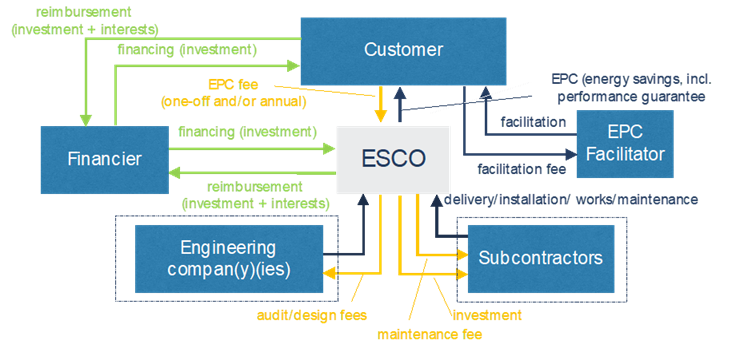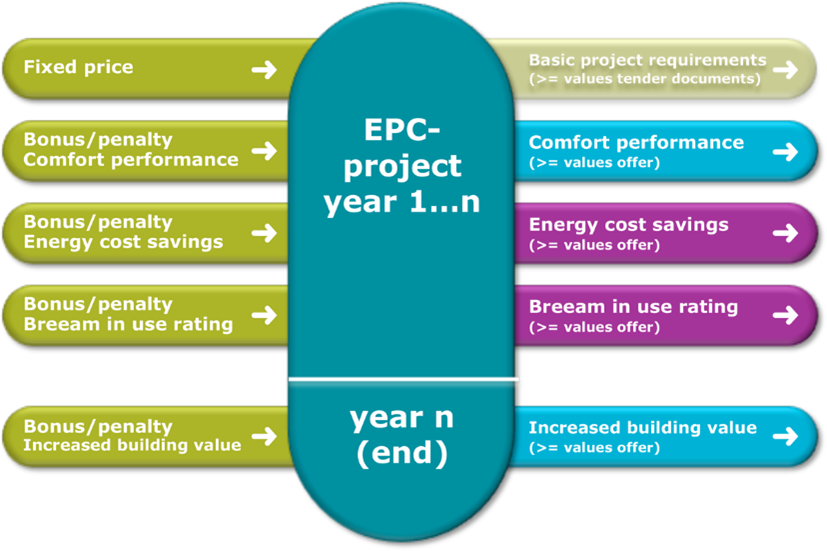
When building owners engage into an energy renovation of their building based on the StepUP renovation methodology, they engage in new technologies and solutions making their building renovation more attractive and affordable. StepUp achieves this by using continuous feedback loops and promoting an iterative deep energy renovation approach, based on data insights, which minimises performance gaps, reduces investment risks, minimises disruption and positively impacts on energy costs.
The StepUP renovation methodology is not only about optimizing and reducing renovation and maintenance costs, energy cost savings and increased building value, but it is also about providing the building owner with several other benefits, potentially enhancing the business case of the envisaged StepUP energy renovation. These other benefits, often referred to as multiple benefits, can relate to improved Indoor Environmental Quality (IEQ), indoor thermal comfort, reduced noise, or decreased nuisance to the users of the building during the works. They can positively affect user’s mental and physical health, reduce their sick days, and consequently reduce their healthcare expenses, or they can result in improved occupant satisfaction, which can be beneficial to the building owner as well. Last but not least, reduced CO2 emissions as a result of the StepUP energy renovation might help to mitigate climate change.
So, when deciding whether an investment in a StepUP energy renovation does make sense one should not only include quantitative financial benefits, but also all those other benefits, quantitative and/or qualitative, that put the StepUP business case in the right perspective. Indeed, when considering all the benefits in the business case, the deep energy renovation can be a much more attractive solution than a renovation process with traditional economic calculations whereby only the “financial logic” rules.
Admittedly, going through the exercise of monetizing the financial benefits, giving value to the non-monetary quantifiable multiple benefits (e.g. improved IEQ, thermal comfort,…) and giving meaning or consideration to other qualitative benefits (e.g. green image, building aesthetics, well-being..) in order to include these in the StepUP business case is difficult and cumbersome. It often requires a multidisciplinary approach as the needed expertise to provide meaningful information may reside with different experts. But once you’ve gone through this valuation process it provides you with a balanced and meaningful set of performance indicators and benefits that can truly support the investment decision process. Well, at least…on paper.
“For one thing is providing a positive business case based on all possible relevant financial and multiple benefits, another thing is making sure that these benefits last after the energy renovation has been implemented”.
Indeed, how do you ensure that the business case is not only robust on paper or at the beginning of the envisaged StepUP renovation but that the assumptions, objectives, and multiple benefits are still valid after 5 years, 10 years or even a longer time? How do you mitigate the significant risk of underperformance of the implemented energy conservation measures? Often, the way energy renovation projects are being designed and implemented, involving different stakeholders in the fragmented service value chain (e.g., engineering companies, installers, contractors, construction companies, technology providers,…), makes that none of the involved stakeholders cover the potential risk of underperformance.
“Management of the risk of underperformance can be achieved by turning to energy renovation service models whereby a single party covers the underperformance risk and provides performance guarantees”.
Such a model is Energy Performance Contracting (EPC) in which Energy Services Companies (ESCOs) deliver guaranteed energy and cost savings and as such take on a significant level of financial performance risk. EPC is a market-based instrument for the implementation of energy efficiency in buildings. It is a contractual arrangement between a beneficiary (e.g., building owner or occupier) and a provider (usually an ESCO) to improve a building’s energy efficiency. It can be seen as a tendering and delivery model for energy savings. In this model, energy savings are designed, built, maintained and guaranteed by the ESCO, acting as a single point-of contact and sole responsible party for the whole energy renovation project. In case of underperformance, i.e. when the guaranteed energy savings are not achieved, the ESCO will pay a penalty equivalent to the non-achieved target, though guaranteed energy cost savings. On the other hand, in case of overperformance, when additional energy cost savings have been achieved, the ESCO will be paid a bonus.
“By shifting the energy savings performance risk to the ESCO, EPC models can provide you with stable and predictable cash flows, actually enhancing the financial business case of your StepUP renovation project”.
 Figure 1: Energy Performance Contracting (EPC) Business Model for energy efficiency, courtesy Energinvest
Figure 1: Energy Performance Contracting (EPC) Business Model for energy efficiency, courtesy Energinvest
EPC very often only focuses on performance risk mitigation of the envisaged energy savings, but its concept of performance guarantees can be the basis for setting up a framework that allows you to secure the performance of the implemented energy conservation measures to deliver other important benefits discussed earlier.
Such a framework is being provided by smartEPC®, which was developed by Energinvest and its partners as an innovative and comprehensive delivery mechanism (i.e., methodology and full set of tools) to design, tender and implement energy renovation projects in buildings. SmartEPC® is based on the more generic EPC, but enhances the EPC model by extending it with:
- Performance-based Maintenance (e.g., using the Dutch standard for performance-based maintenance NEN2767)
- Performance-based Comfort management (e.g., using Comfort meter)
- Performance-based Certification (e.g., using BREEAM in-use; Energy Performance Certificates or Energy Labels)
- An innovative « Building value » concept (derived from NEN2767)
- smartKPIs (or project requirements) for key performance areas (energy, comfort, building value, maintenance, security,…) and other service level parameters or requirements.

Figure 2 smartEPC, an innovative model for energy, comfort, maintenance, building value & third party building certification performance contracting, courtesy Energinvest
smartEPC® also includes intelligent document management, a high level of standardisation and relevant documents, templates, forms, etc. in all phases of a building renovation project.
smartEPC® provides a set of project requirements that go beyond mere energy savings to include other desired or envisaged multiple benefits for which the performance obligation is taken up by the service provider or ESCO during the whole term of the contract.
Consequently, by implementing Energy Performance Contracting as a concept to mitigate the performance risks of an energy renovation and smartEPC® as a design, procurement or tendering and implementation framework one can secure the continuous performance of the energy conservation measures, and by extension, most of the multiple benefits and performance indicators that have been included in the business case of the StepUP energy renovation.
 This project has received funding from the European Union’s Horizon 2020 research and innovation programme under grant agreement no. 847053.
This project has received funding from the European Union’s Horizon 2020 research and innovation programme under grant agreement no. 847053.
This website reflects only the author’s views. The European Climate, Infrastructure and Environment Executive Agency is not responsible for any use that may be made of the information it contains.
